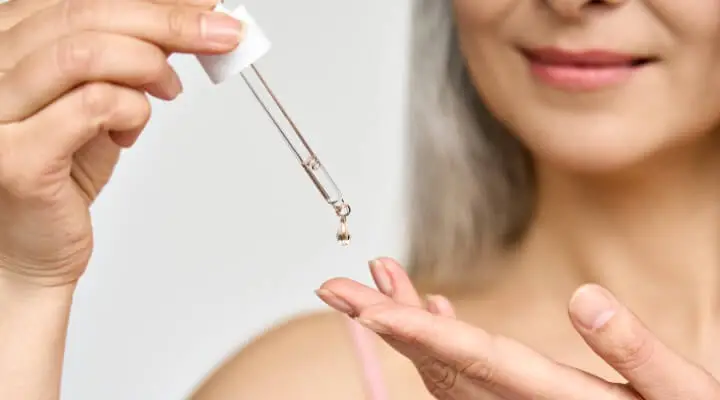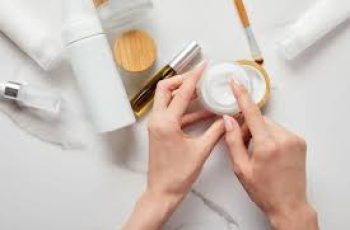
Can You Use Niacinamide on Broken Skin?
Niacinamide is certainly an underdog when it comes to this vast and overwhelming world of skincare. This ingredient is one that can work effectively in anyone’s routine, no matter which skin type they are. Not only is it able to draw moisture into the skin and lock it into place, but it is also able to regulate the sebum production, and that’s not all the benefits it is able to deliver to the skin. The best part, it can work effectively with other skincare ingredients, here is a little more detail about what niacinamide is and how it works on the skin.
What is niacinamide?
Niacinamide is a form of vitamin B3, also known as niacin, and is packed with antioxidants and humectant traits. You’ll find it is often formulated into serums and other similar products which deliver anti-ageing skin results, as well as boosting the overall hydration of the skin. Any water surrounding the face or found in other products formulations are draw into the skin surface and locked into place. This results in a complexion that looks plumped, glowing, and healthy. You’ll also find that signs of dehydration, that are often mistaken for the beginning signs of premature ageing, such as fine lines and wrinkles are visibly reduced. If you are wanting to know a little more about niacinamide and the benefits it has on the skin, check out our dedicated blog post over on The Beauty Insiders.
Now you have had that little refresher course in niacinamide, let’s move onto the answering today’s question which is, can you use niacinamide on broken skin? Let’s dive right in and find out more about how this clever humectant works on open wounds and broken skin.
Can I put niacinamide on open wound?
Yes, you can put niacinamide on open wounds, even rosacea and acne flare-ups. This is because the anti-inflammatory effect of the vitamin can work by increasing the production of fibroblast migration and proliferation. Both are responsible for helping the skin surface heal when there is an open wound or broken skin. By topically applying niacinamide onto wounds you will the speed at which they heal is increased without any unwanted side effects, such as stinging, flare-up in redness, or irritation.
Having said that, everyone’s skin is different, ensure before using any new formulation or skincare ingredients you consult with a doctor or dermatologist before applying it on the face.
Can I use niacinamide on peeling skin?
Absolutely, in fact niacinamide is properly the best ingredient to apply to the skin if you find it has begun to peel. Whichever the cause of the skin peeling, be it sunburn, or you are being a little lapsed with your exfoliating, niacinamide will make light work of this leaving you with a hydrated complexion. You’ll also find that there is an improvement in the overall skin texture as well as the strength of the protective skin barrier. By strengthening the skin barrier, you’ll also find that the skin is able to combat any exposure to free radicals, such as UV light, pollution, and other environmental aggressors, all of which can cause damage to the skin.
If you find your skin is peeling, or you are apprehensive of it peeling, applying niacinamide daily will ensure the complexion remains healthy, plumped, and glowing. You’ll also find that by counteracting the dryness that usually comes with skin peeling, any products applied after will absorb quickly and effectively into the skin surface.
Can you put niacinamide on open pimples?
Yes, you can, for many, niacinamide is their secret weapon for combating pimples. As I have already mentioned, niacinamide helps to promote skin healing and when applied onto an open pimple will result in the blemish reducing in size thanks to the anti-inflammatory properties of niacinamide.
You will also find that when a pimple is broken or becomes open, the risk of it leaving behind a post acne scar increase. By applying niacinamide topically onto the affected areas, you can prevent any pigmentation or scarring from developing, and instead find the inflammation is reduced, and scarring is non-existent.
Can niacinamide worsen skin?
Not really but be mindful that your skin may not take to applying niacinamide regularly. Unlike other skin ingredients, such as exfoliating AHAs, such as glycolic acid, or active levels of vitamin C, niacinamide doesn’t cause skin purging. Purging is a result of an exfoliating ingredient being applied to the skin and resulting in it increasing the skin cell turnover. The good news is that niacinamide rarely causes the skin to purge, but it can cause some minor breakouts. This is usually something related to the percentage of ingredient being higher than 10% as this can sometimes be too strong for certain skin types. If you find you have a breakout it’s best to make a note to see how long it takes to disappear, if it’s longer than 4 weeks, stop using your niacinamide product and seek the advice from your GP or medical professional.
What heals broken skin fast on face?
The best way of healing broken skin fast is ensuring that it is constantly moist. By this I don’t mean keeping the face wet but applying liberal amounts of hydrating ingredients with humectant benefits, such petroleum jelly, hyaluronic acid, and niacinamide. By ensuring the broken skin has a constant layer of hydration to it, it will heal faster and feel comfortable throughout the healing process.
What can you put on broken skin pimples?
There are a few things that you should avoid applying onto broken skin pimples. Avoid applying harsh and potent formulas onto broken skin, as well as ingredients such as sulphur, benzoyl peroxide, and salicylic acid. Ensure you keep the affected area moisturised and hydrated as this will prevent the skin barrier becoming weakened and suspectable to damage caused by exposure to free radicals, such as UV light, pollution, and other aggressors.
There you have a little more information about using niacinamide on broken skin, if you have any further questions then please don’t hesitate to get in touch with us over on Instagram, you’ll find one of our skincare experts in the direct messages.


